Library of Congress's Blog, page 183
October 2, 2012
Page from the Past: A Wartime Mimeograph
(The following is an article from the September-October 2012 issue of the Library’s new magazine, LCM, highlighting a “page from the past” of the publication’s humble beginnings.)

Page from the first issue of the Library of Congress Staff Information Bulletin, Jan. 23, 1942.
With the debut of its new magazine, the Library bids a fond farewell to its predecessor, the Library of Congress Information Bulletin, which began publication 70 years ago.
The first issue of the Library of Congress Staff Information Bulletin was published on Jan. 23, 1942—nearly two months after the attack on Pearl Harbor that led to America’s entry into World War II. The publication provided the staff with wartime information such as air-raid watches, Red Cross war-relief drives and the sale of defense bonds. Staff appointments and deployments were announced, along with new policies, offices, committees and collections that arose in response to the war effort.
In July 1943, the publication was renamed the Library of Congress Information Bulletin and its audience was broadened to include the public as well as the staff. The launch of a staff newsletter—The Gazette—in April 1990 allowed the Information Bulletin to focus on its public audience.
Through improvements in technology, the Information Bulletin evolved from a mimeographed sheet to a four-color printed publication produced using digital technology. Issues dating from 1993 are accessible online.
Download the September-October 2012 issue of the LCM in its entirety here. You can also view the archives of the Library’s former publication from 1993 to 2011.
September 26, 2012
The Bull Run of the West
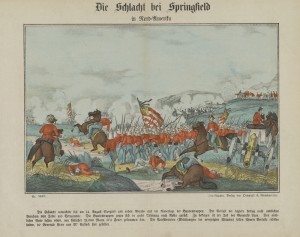 “Better, sir, far better, that the blood of every man, woman, and child within the limits of the state should flow, than that she should defy the federal government,” swore Union Gen. Nathaniel Lyon to Missouri governor and Confederate sympathizer Claiborne Fox Jackson during negotiations to prevent the state from joining the Confederacy.
“Better, sir, far better, that the blood of every man, woman, and child within the limits of the state should flow, than that she should defy the federal government,” swore Union Gen. Nathaniel Lyon to Missouri governor and Confederate sympathizer Claiborne Fox Jackson during negotiations to prevent the state from joining the Confederacy.
His next words, “this means war,” were put into action after Jackson publicly declared for the Confederacy. Following a few skirmishes in June and July, Union and Confederate factions met at first light on Aug. 10, 1861, at Wilson’s Creek, near Springfield, for what would ultimately be a Southern victory by default.
Lyon’s army struck the first blow, forcing the Confederates to retreat from high ground, which later would be called “Bloody Hill.” The Confederates then launched three counterattacks, but the Union line still held. However, the Southern army did manage to rout Union Col. Franz Sigel’s column, forcing the soldiers, many of whom were German, to flee for their lives. With this, the battle shifted in the South’s favor. Lyon had also been shot during the battle, becoming the first Union general to be killed in Civil War combat.
Although their lines remained unbroken, Union forces were exhausted and running low on ammunition. These and other considerations caused their new commander, Major Samuel D. Sturgis, to order his troops to withdraw, leaving the field to their enemy.
Sometimes called the “Bull Run of the West,” the Battle of Wilson’s Creek was the first major battle of the Western Theater of the American Civil War.
Soon to be on view in the Library’s new exhibition, “The Civil War in America,” opening Nov. 12, is a rare color German lithograph — never before placed on public display — that depicts the battle in which Lyon was killed. Translated, the caption says:
The battle began in the morning of August 14 and ended in the evening with the defeat of the Union troops. According to official reports, the Union losses totaled 800 dead and wounded. The Union troops made an orderly retreat to Rolla. Unfortunately General Lyon met his death. Eight-thousand men from the North and 23,000 from the South are said to have come under fire. The Confederates (who are in rebellion against the United States) reportedly suffered heavy losses. Generals Price and McCulloch fell in battle.”
(Maj. Gen. Sterling Price commanded the Missouri State Guard, which joined forces with Confederate forces lead by Brig. Gen. Benjamin McCulloch; both generals survived the battle.)
Europeans following the events of the American Civil War especially noted the formation of regiments comprising their countrymen. An estimated 1.3 million Germans alone lived in the North and the South during the Civil War and up to 216,000 served under the Union, while 18,000 wore Confederate gray. The firm of Oehmigke & Riemschneider based in Neuruppin, Germany, produced popular prints of Civil War battles. This image depicts the death of General Lyon at the Battle of Springfield (Wilson’s Creek) in Missouri, on August 10, 1861. Lyon’s command included several regiments of German volunteers and the battle was important news in Neuruppin.
The title of the image, “Die Schlacht bei Springfield in Nord Amerika” (The Battle of Springfield in North America), might be a source of confusion. According to Margaret Wagner, author of “The Library of Congress Illustrated Timeline of the Civil War,” the battle depicted in this rare lithograph is most commonly known as the Battle of Wilson’s Creek. Since the battle occurred fairly close to Springfield, however, one alternative name for the engagement (and the name used by the German lithographers) is the Battle of Springfield.
Make sure to check back next Wednesday for another spotlight on other items from “The Civil War in America.” Until then, you can read a bit about them and the exhibition here.
September 24, 2012
A Book (Festival) With a Happy Ending
The 2012 Library of Congress National Book Festival closed up shop Sunday evening – leaving more than 200,000 delighted book-lovers thrilled to have heard from and met their favorite authors, stoked up with new titles to read, and exhilarated by two days of gorgeous fall weather there on the National Mall.

Nice light show, but no rain, for NBF12
One couple even got engaged in the book-signing line for graphic novelist Craig Thompson!
I may be biased, but I’m also in a position to know: as the project (operational) manager for the festival, I can attest that things did indeed run smoothly, and there were few hang-ups or hitches.
That was largely the result of a great team at the Library of Congress (thanks, gang!) and no fewer than 1,200 volunteers who trained specially to provide information, service and safety to the hordes of happy guests. Thanks to all you volunteers, from the Library, the general public and the Junior League of Washington – it wouldn’t have happened without you. Happy hundredth anniversary to the JLW, by the way …
No fewer than 126 authors, illustrators and poets came to the National Mall for this year’s festival, more than at any of the Library’s past 11 festivals.
Authors included Nobel-winner Mario Vargas Llosa, T.C. Boyle, Patricia Cornwell, Robert Caro, Jeffrey Eugenides, U.S. Rep. John Lewis, Michael Connelly, Christopher Paolini, Junot Diaz, Thomas Friedman, Walter Isaacson, Charlaine Harris, Mike Lupica, Lois Lowry, Jeff Kinney and R.L. Stine; and a wildly popular author named John Green (“Books are like tweets, except longer”) who thanked the 1,800 people who waited in line for him.
Nothing as big as the National Book Festival can happen, however, without a few lost items. We suspect some little one is missing the Hello Kitty toy pictured below, dropped in the Let’s Read America Pavilion near the stuffed steed of festival sponsor Wells Fargo. That your Kitty? Email me at jgav@loc.gov.

Kitty wants to come home
September 21, 2012
A Piñata of Awesomeness
(The following is a guest post from the Library’s Director of Communications, Gayle Osterberg.)
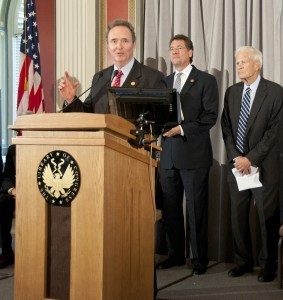
Rep. Dan Lungren (from left), Rep. Gregg Harper and Librarian of Congress James H. Billington introduced the Congress.gov beta site to the public on Wednesday. / Cecelia Rogers
It’s been a big week for the Library of Congress, as we’ve launched two exciting new resources to serve our many and varied audiences in the years ahead, and are rolling into our biggest event of the year on the National Mall this weekend.
To recap:
The new Congress.gov website is a rebuild of the THOMAS legislative information system from the ground up, enabling modern, user-friendly features that will make finding and learning about legislation and the legislative process more accessible to all. We are gratified at the positive response to the site so far and are looking forward to hearing your ongoing feedback during the site’s beta stage so it can be further refined to serve Congress and the public.
The new Library of Congress Magazine, LCM, available online, is a window into the unparalleled collections and expertise the Library offers researchers, authors, educators, creators of all kinds, and of course, Members of Congress, their staff and other government entities. As Librarian of Congress James Billington notes in the magazine’s Last Word column, we hope it will lead you to explore the millions of books, manuscripts, photos, movies, maps and music in our collection, either in person or online.
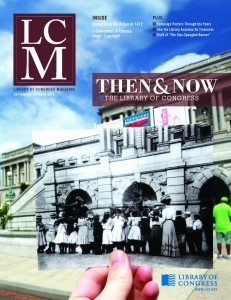 Both projects reflect more than a year of study, surveys, review of best practices, design, focus grouping, data management, content development, workflow adjustment and a litany of other details.
Both projects reflect more than a year of study, surveys, review of best practices, design, focus grouping, data management, content development, workflow adjustment and a litany of other details.
They are the result of the hard work of many dedicated public servants here at the Library, across many different offices. In the case of Congress.gov, many other legislative staff from the House, Senate and Government Printing Office are contributing data and expertise to ensure the site becomes and remains the go-to place for fact-based legislative information.
Finally, this weekend brings the 12th annual Library of Congress National Book Festival on the National Mall. Made possible by many generous private sponsors, the festival brings together more than 120 authors of all kinds with something for all ages. It is one of our favorite events, and we hope you can join the expected 200,000 other book fans for this literary extravaganza.
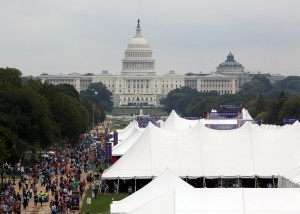
Library of Congress National Book Festival. September 24, 2011. / Abby Brack Lewis
The week encapsulates the many ways the Library is working to not only collect and preserve knowledge and creativity but also to make it
accessible to the nation as well. Through our web presence, exhibitions, publications and public events, we are working every day to fulfill this important piece of our mission on behalf of Congress and the nation.
This week one person tweeted that using the Library’s resources is “like having a piñata stuffed to the brim with awesomeness!!!” I could not think of a more colorful way to sum up the week.
September 20, 2012
Introducing LCM, a New Library of Congress Magazine
What a difference a year makes.
Last year at this time, we were putting to bed the final issue of the Library of Congress Information Bulletin—not just for the year 2011, but for all eternity. This venerable publication, which was first published on Jan. 23, 1942, as a mimeographed staff newsletter during World War II, evolved into a four-color printed publication produced using digital technology.
It’s been my pleasure to have served as its editor since 2005, following in the footsteps of a host of very talented editors—each maximizing the print, graphics and distribution technology available at the time.
With the advent of e-zines, iPads and other mobile devices, it was time not only to consider new distribution methods, but to rethink the audience, content and visual presentation of the Library’s magazine. With input from existing and prospective readers, we did just that.
So without further ado, it is my great pleasure to introduce LCM—the re-imagined, redesigned and renamed Library of Congress Magazine. The bi-monthly, general interest magazine features education and entertaining content about current and historical events through the prism of the Library’s unparalleled collections and expert staff.
In the premiere issue, we’ve taken the opportunity to re-introduce the Library by re-telling its history in connection to the War of 1812.
In its pages, readers will learn how to use the Library, how the Library acquires its collections, what’s new online and for sale in the shop, what exhibitions can be viewed in person and online and how donations support the Library. This issue, and those that follow, will be beautifully illustrated with historic images drawn from the Library’s collections and contemporary photographs.
The magazine’s print circulation of 12,000 includes Members of Congress and libraries and educational institutions throughout the nation and the world. The publication is also accessible free online.
We hope you like our new magazine, and that it will lead you to explore the millions of books, manuscripts, photos, movies, maps and music in our collection, either in person or online.
September 19, 2012
NBF … This Just In …
Author Bob Woodward will join the lineup for the Library of Congress National Book Festival, speaking at 2:45 p.m. on Sunday, Sept. 23 in the History & Biography Pavilion about his new book “The Price of Politics.”
More about the two-day, free-and-open-to-the-public National Book Festival at www.loc.gov/bookfest.
.
Congress.gov Unveiled Today
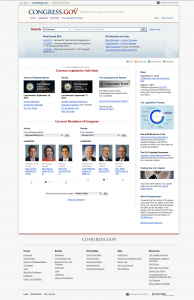 Library of Congress and Capitol Hill staff gathered today in the historic Thomas Jefferson Building for a special event launching Congress.gov, a new public beta site for accessing free, fact-based legislative information. Featuring platform mobility, comprehensive information retrieval and user-friendly presentation, the new site eventually will replace the THOMAS system, introduced in 1995.
Library of Congress and Capitol Hill staff gathered today in the historic Thomas Jefferson Building for a special event launching Congress.gov, a new public beta site for accessing free, fact-based legislative information. Featuring platform mobility, comprehensive information retrieval and user-friendly presentation, the new site eventually will replace the THOMAS system, introduced in 1995.
“Thomas Jefferson believed that there should be little interfering with Congress and its constituents,” said Librarian of Congress James H. Billington in his opening remarks during the event. “Congress.gov reaffirms for the 21st century Congress’s vision of a vital legislative information resource for all Americans.”
He then introduced Rep. Dan Lungren (R-Calif.), chairman of the Committee on House Administration, and Rep. Gregg Harper (R-Miss.), Vice-Chair of the Joint Committee on the Library, who also made remarks.
“Time marches on and it’s time now for [THOMAS’s] worthy successor,” said Lungren. “Transparency is the hallmark of American government, and Congress.gov will ensure that we meet that bedrock commitment and that we will succeed.”
“As we gather here today, the Library has been a key resource for the public to understand Congress,” said Harper. “Congress.gov will play an important role in improving transparency and efficiency. I hope our constituents will enjoy this new resource and look forward to the Library’s continued efforts.”
Also in attendance at the event were The Hon. Nancy Erickson, Secretary of the Senate; Bob Reeves, Deputy Clerk of the U.S. House; Dan Strodel, Chief Administrative Officer of the U.S. House; Davita Vance-Cook, Acting Printer of the United States, U.S. Government Printing Office; and Martina Bradford, Deputy Senate Sergeant-at-Arms.
One thing both congressmen mentioned and a point that was reiterated throughout the presentation was that the site is optimized for mobile devices, effectively displaying information and maintaining readability.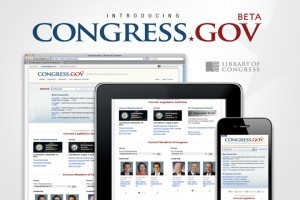
The Congress.gov site includes bill status and summary, bill text and member profiles and other new features like comprehensive searching across bill text, summary and statuses; persistent URLs for search results; Members’ legislative history and biographical profiles; and maintenance of existing features such as links to video of the House and Senate floor, top searched bills and the save/share feature. The site also features several new multimedia presentations on the legislative process. You can read more about the site here.
With the release of the beta site, the Library hopes to gather user feedback and have an opportunity to refine functionality while other content is incorporated, including the Congressional Record, committee reports, nominations, treaties and communications. Congress.gov will operate as a beta site for approximately one year as this work is completed. During that time, THOMAS will continue to operate as usual.
Data for the information system is provided by multiple legislative branch partners in this effort, including the Office of the Secretary of the Senate, the Office of the Clerk of the U.S. House of Representatives, the Office of the Senate Sergeant at Arms, the Office of the Chief Administrative Officer of the U.S. House of Representatives and the Government Printing Office.
September 18, 2012
Closing the Book
The Library of Congress, with collections that are universal and comprise all media, has a long history of acknowledging the importance of books. Its “Books That Shaped America” exhibition is currently on view through Sept. 29 in the Southwest Gallery of the Thomas Jefferson Building. The exhibition is open from 8:30 a.m. to 4:30 p.m. every day except Sunday.
The titles on view have had a profound effect on American life and encompass all genres, from history to biography to fiction to religion. Their settings are like a travel through time, from the founding of our nation to the old west to the jazz age to the future.
The Civil War – a period in our nation’s history that impacted how we lived our lives and governed ourselves for years to come – is also represented well among several books on the list.
Frederick Douglass, “Narrative of the Life of Frederick Douglass” (1845)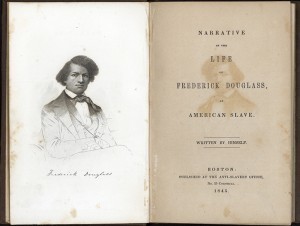
Published less than seven years after Douglass had escaped and before his freedom was purchased, this slave narrative relates Douglass’s experiences growing up a slave in Maryland and was a testament for the need to abolish slavery.
Harriet Beecher Stowe, “Uncle Tom’s Cabin” (1852)
This best-selling novel of the 19th century was extremely influential in fueling antislavery sentiment during the decade preceding the Civil War. With her vivid sketches of slave sufferings and family separations, Stowe hoped to awaken sympathy for oppressed slaves and encourage Northerners to disobey the Fugitive Slave Law of 1850.
Walt Whitman, “Leaves of Grass” (1855)
The publication of the first slim edition of Walt Whitman’s “Leaves of Grass” in 1855 was the debut of a masterpiece that shifted the course of American literary history. By his death in 1892, Leaves was a thick compendium that represented Whitman’s vision of America over nearly the entire last half of the nineteenth century. Among the collection’s best-known poems is “O Captain! My Captain!,” a metaphorical tribute to the slain Abraham Lincoln.
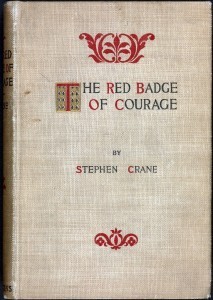 Stephen Crane, “The Red Badge of Courage” (1895)
Stephen Crane, “The Red Badge of Courage” (1895)
Crane’s book has been called the greatest novel about the American Civil War. The story follows a young recruit in the Civil War who learns the cruelty of war and is notable for its vivid depiction of the internal conflict of its main character.
Margaret Mitchell, “Gone With the Wind” (1936)
Mitchell’s book set in the South during the Civil War won both the Pulitzer Prize and National Book Award, and it remains popular, despite charges that its author had a blind eye regarding the horrors of slavery.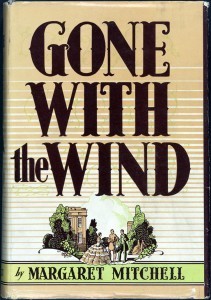
Toni Morrison, “Beloved” (1987)
Morrison won the 1988 Pulitzer Prize for fiction for her post-Civil War novel based on the true story of an escaped slave and the tragic consequences when a posse comes to reclaim her. The author won the Nobel Prize for literature in 1993, and in 2006 The New York Times named “Beloved” “the best work of American fiction of the past 25 years.”
The Library continues its look at the Civil War with a new exhibition, “The Civil War in America,” opening on Nov. 12. You can read more about it here. This blog post also serves as a sort-of “kick-off” to a weekly blog series offering an in-depth look at some of the special items that will be on display, those of which you can read more about here. The posts will run every Wednesday until the exhibition opening.
Countdown to Book-Stravaganza

Scouts can get a badge for attending the Festival.
Just days stand between the book-lovers of the USA and the Library of Congress National Book Festival!
But don’t just stare at the countdown clock on the Festival website … check out the speaking and book-signing schedules for our 125 authors, or listen to the podcasts already available from some of this year’s authors. That will take you away from whatever you’re reading, but it won’t necessarily be a bad thing …
This will be the second year that the Festival will be all weekend – both Saturday (from 10 a.m. – 5:30 p.m.) and Sunday (noon to 5:30 p.m.) on the National Mall. It’s FREE – that’s right, there is no admission, no ticket is needed, there will be no gate to pass through – and it will go on rain or shine, under the cover of our shiny white tent canopies. If there’s a hint of rain and you aren’t in a chair, bring an umbrella and just stuff in around the edges. Everybody does.
In addition to the major pavilions – History & Biography, Fiction & Mystery, Contemporary Life, Poetry & Prose, Teens & Children, and Children – once again, for younger kids, Target is sponsoring the Family Storytelling Stage, featuring authors and entertainment for those just rounding the corner on one of the great discoveries of life – reading. There you will find authors ranging from Goosebumps guy R.L. Stine to author Jeff Kinney, friend to wimpy kids everywhere, and musical acts from Disney Junior’s Choo-Choo Soul with Genevieve to Hip Hop Harry.
Going with kids? Check out the portion of the website with activities just for them. Girl Scouts and Boy Scouts can get a badge this year for attending; here’s where to find it.
And don’t miss the Library of Congress Pavilion, where you can find out more about a world-renowned resource that you own and that you can use and enjoy in many ways. In that pavilion Saturday at 11 a.m., you can hear from Chet Van Duzer and John W. Hessler, authors of a new Library of Congress book about Martin Waldseemüller, mapmaker of the early 1500s.
Saturday, of course, the Library will offer the Pavilion of the States, where literacy organizations from all 50 states and the major U.S. territories will share the magic of their local programs and authors. On Sunday, that gigantic tent will become two new pavilions: Sci Fi-Fantasy-Graphic Novels (featuring such authors as Christopher Paolini and Craig Thompson) and Special Programs, featuring everything from J.R.R. Tolkien expert Corey Olsen to the winners of a Library of Congress/DC Public Library summer essay contest, in which kids were invited to write about “A Book That Shaped Me.” The Festival’s supremely talented poster artist, Rafael López, will speak at Special Programs Sunday afternoon, and he will sign books and posters both Saturday and Sunday.
C-SPAN2 Book TV plans to cover both days live, and rebroadcasts the Festival as well. If you can’t attend in person, or if you do but want to revisit the talks you saw (or the ones you couldn’t see because of schedule conflicts), the Library will post all the authors’ presentations on the Festival website in coming months.
And now, a word for our sponsors: the people who make all this possible. They are David M. Rubenstein, who co-chairs the National Book Festival Board; Target, The Washington Post, Wells Fargo and the Institute of Museum and Library Services; the National Endowment for the Arts and PBS KIDS; Barnes & Noble; Digital Bookmobile powered by OverDrive, LEGO Systems, Inc. and Scholastic Inc.; the Harper Lee Prize for Legal Fiction, The Hay-Adams hotel and the National Endowment for the Humanities. We also thank the Junior League of Washington (celebrating its 100th anniversary this year!) which provides hundreds of volunteers and The Links, a service group comprised of African-American women who are bringing hundreds of kids from the region to this year’s Festival.
September 13, 2012
Library in the News: August Recap Edition
There were ample headlines about the Library of Congress in August that really gave a flavor of the institution’s collections, people and mission.
Leading the way was a great feature in Delta’s Sky Magazine on the Library’s use of technology to preserve the nation’s past and future.
At a time when so many libraries are suffering, the people who work at massive national libraries remain busier than ever,” said reporter Steve Marsh. “At the important, historically charged U.S. Library of Congress, they’re using advanced technology to solve the cultural mysteries of the past.”
Continuing to make news was the Library’s list of “books that shaped America.”
NPR’s Lynn Neary spoke with Mark Dimunation, chief of the Rare Book and Special Collections Division, about the process of assembling the collection.
More than creating an ultimate, perfect list, the goal was to spark conversations about the significance of literature,” Dimunation said.
He also talked about some of his favorite books on the list, including “Uncle Tom’s Cabin,” The Bible and “The Catcher in the Rye.”
In her story for the Tampa Bay Times, reporter Colette Bancroft said, “Influence is a difficult thing to measure, but the list, compiled by ‘curators and experts’ at the Library of Congress and winnowed from a much longer list to create a reasonably sized physical exhibit, certainly consists of books that have made an impact — on our society, on our government, on our daily lives, on our imaginations.”
August seemed to be a big month for highlighting some interesting photo collections from the Library. The Huffington Post looked at a series of portraits showing bulldogs in costume. On its Planet Money Blog, NPR featured images showing how currency was made a century ago.
The Library’s online collection of Civil War portraits includes many unidentified individuals. One of the goals of the collection is to solve those mysteries where possible. The Washington Post ran a story on one such ID – of Confederate soldier Stephen Pollard.
He is a wild-haired young man with an intense look, two pistols in his belt and what looks like a short musket in his hands,” wrote Michael E. Ruane. “His face is familiar and has been reprinted in books and used in a famous documentary about the Civil War.
And it turned out that the identity had been known in Georgia but apparently not far beyond,” he continued.
Also running the story was the New York Daily News, KASU (Arkansas State University radio) and NPR.
With August came the 100th anniversary of when U.S.-made movies earned their own copyright designation. The Library’s Packard Campus for Audio-Visual Conservation houses the nation’s greatest collection of early film and works to preserve past and present works for future generations.
“Congress carved out a film copyright designation on Aug. 24, 1912, and within weeks, filmmakers were registering their dramas, documentaries and comedies,” wrote Anthony McCartney in his story for the Associated Press, which was also picked up by the Washington Post, Northwester, Yahoo and the New Haven Register among other outlets. “The vaults at the Library of Congress’ Packard Campus for Audio-Visual Conservation in Culpeper, Va., represent decades of work by copyright officials to not only protect the rights of filmmakers but also preserve their movies for future generations.”
And last, but certainly not least, PBS Newshour did a picture slideshow presentation on its website featuring Library presidential campaign materials. Highlighted were political cartoons, sheet music and photographs relating to William Henry Harrison, Franklin Delano Roosevelt and Calvin Coolidge, among others.
Library of Congress's Blog
- Library of Congress's profile
- 74 followers



